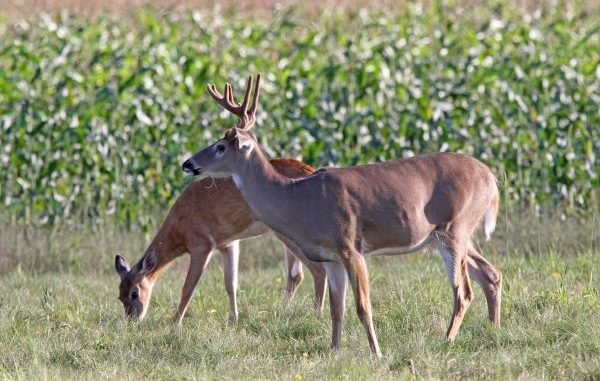
Conservation organization lays out how big-game species are already being affected
The National Wildlife Federation is urging sportsmen to do their part to help slow down or reverse climate change, concluding in its latest report “Nowhere to Run: Big Game Wildlife in a Warming World” that many big-game species across North America are already being affected and could be headed for a big fall.
The 36-page report says overwhelming evidence points to climate change brought about by air pollution and other chemical additions to the earth’s atmosphere, and that wildlife managers need to take into account possible results when managing big-game populations.
The report, which can be accessed at www.nwf.org/Sportsmen/Climate-Change/Big-Game-In-a-Warming-World.aspx, points to habitat changes that have already been documented affecting North American big-game populations of moose, pronghorn antelope, caribou, bighorn sheep, mule deer and whitetail deer, and predicts that effects of further climate change could even more drastically affect those species — as well as humans.
“We’re beginning to see evidence of the impacts of climate change on wildlife species and their habitats,” said North Carolina Wildlife Resources Commission Executive Direcor Myers, who contributed to the report. “Successful adaptation to changing conditions requires that hunters, wildlife viewers, wildlife agencies and others work together to reduce risks and increase resilience.”
The two main areas already being affected by climate change, have been drought and warming temperatures — which often go hand in hand. According to the report, both can have negative effects on whitetail deer.
The report cites drought and warmer temperatures — seven of the 10 warmest years on record have taken place since 1998 — as conditions that can lead to more and repeated outbreaks of epizootic hemorrhagic disease, one of which caused mortality of up to 50 percent in a handful of Northwest North Carolina counties in 2012. Warmer temperatures can also affect the timing of the breeding season, moving it later in the calendar, which has the effect of moving fawning and weaning later into the summer.
The report also points out that shorter winters can lead to a higher rate of survival of deer ticks, which transmit lyme disease, and it predicts an increase of 70 percent in areas affected by lyme disease by the end of the century.
“Whitetails have a very broad distribution. However, disease, human impacts and the changing climate all have potential to affect wildlife resources,” North Carolina State’s Dr. John King said. “To preserve the quality of deer resources in the South, we really need to identify and manage all of these interacting impacts, including climate change. Otherwise, the future quality of our natural resources remains uncertain.”


